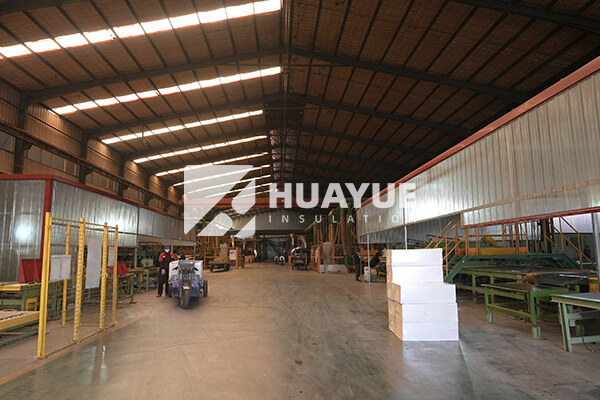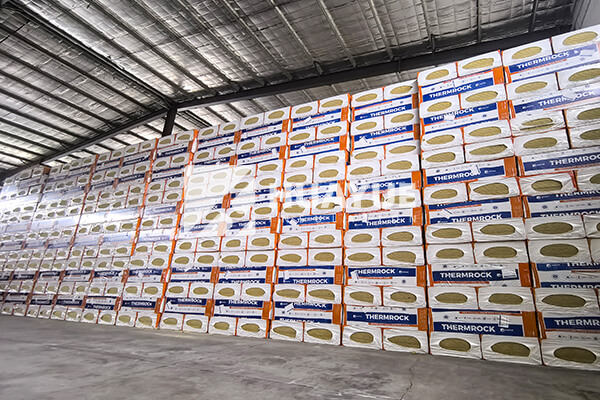What is the R Value of Rock Wool Insulation?
Are you frustrated with cold rooms and high heating bills? Maybe your insulation is to blame—or you are simply unsure about “R value.” Let’s fix that.
Rock wool insulation is known for its high R value, which means it resists heat flow very well. For most products, you can expect an R value of approximately 3.0 to 4.0 per inch thickness.

Rock wool insulation is popular in industrial and residential construction. Some say it is best for tanks, walls, and roofs. I use rock wool often for its durability and performance. Let’s look closer at how it stacks up in numbers, thickness, and use cases.
Does Rock wool have an R rating?
When you choose insulation, you want proof that it works. You may have heard of “R ratings”—and wonder if rock wool has one.
Rock wool insulation does have an official R rating. Most rock wool panels have R values between 3.0 and 4.0 per inch, depending on quality and density.

When I ask vendors for specifications, they always show me the R value. It tells me how well the material slows down heat transfer. The higher the R value, the less heat escapes. Here in our industry, rock wool is tested regularly. The R value depends on density, thickness, and sometimes moisture. Many manufacturers provide lab-certified numbers, following standards like ASTM C518. For reference, typical glass wool ranges from R2.2 to R2.7 per inch, so rock wool performs better. A wall insulated with 100mm rock wool will easily meet the most demanding requirements. Engineers like Hans Müller—who manage chemical tanks—depend on these numbers to plan efficient insulation systems and budgets.
| Material | R Value per Inch | Fire Resistance | Water Resistance | Cost (per m²) |
|---|---|---|---|---|
| Rock wool | 3.0-4.0 | Excellent | High | Medium |
| Glass wool | 2.2-2.7 | Good | Moderate | Low |
| Foam glass | 3.0-3.3 | Excellent | Excellent | High |
| Rubber foam | 2.7-3.3 | Moderate | Excellent | Medium |
We can see rock wool leads in R value and fire resistance compared to glass wool. But foam glass can compete, especially for tanks and critical safety applications.
How thick is R30 Rock wool insulation?
You might wonder how much insulation you need to achieve an R30 rating. Thickness matters, especially for rooftops and tanks.
R30 rock wool insulation is typically 8 to 10 inches thick, depending on density and product type.

As someone managing building retrofits, I always double-check thickness before ordering. R value increases with each inch, but not all products are made alike. For walls, most residential codes ask for R13 to R21. Roofs and tanks require even higher ratings—sometimes R30 or more for energy savings. With rock wool, I calculate: at roughly 3.5 per inch, you get R30 from about 8.5 inches of material. Some high-density boards might need a little less. When Hans Müller specifies tank insulation, he picks thickness based on climate and budget. The more insulation, the less heat loss—and the lower the heating bills. Installation quality also matters; gaps or compression reduce actual R value. Always measure twice before installing.
| Desired R Value | Required Thickness (Rock Wool, inches) |
|---|---|
| R13 | 3.5 – 4.2 |
| R21 | 6 – 7 |
| R30 | 8.5 – 10 |
Higher R ratings mean thicker insulation. Rock wool easily reaches commercial and industrial needs while keeping fire and moisture resistance.
What is the R-value of 100mm Rock wool insulation?
If you have a European or metric project, the magic number is often “100mm” for walls or tanks. How does rock wool measure up at this thickness?
100mm (about 4 inches) of rock wool insulation has an R-value between 12 and 16, depending on density and manufacturer.
That number meets most European standards for walls. I find 100mm panels helpful for energy-efficient upgrades and chemical facility tanks, where Hans Müller works. The difference comes down to density and fiber structure. Some manufacturers pack fibers more tightly, pushing R values closer to 16. In extreme conditions, like cold climates, you may want even thicker layers. It’s good to remember that real-world R value can drop if insulation gets compressed or wet, but rock wool handles water pretty well. Fire and mold resistance stay strong at this thickness, making 100mm a favorite for both safety and savings.
| Thickness (mm) | R Value (approximate) |
|---|---|
| 50mm | 6-8 |
| 100mm | 12-16 |
| 150mm | 18-20 |
100mm rock wool panels strike a balance between cost, performance, and ease of installation. They fit most wall cavities or tank blankets.
Is Rock wool a good insulator?
You want insulation that keeps heat where it belongs and doesn’t create safety risks. Is rock wool really one of the best choices?
Rock wool is a top-tier insulator, offering high R values, first-rate fire resistance, and exceptional moisture protection.
I have seen rock wool outperform many other materials in actual use. It is stable, strong, and resists mold, fire, and rodents. For engineers like Hans Müller, these properties allow safer, longer-lasting tanks that cost less to maintain. In cold climates, rock wool keeps energy costs down. It does not sag or lose R value when exposed to moisture. Maintenance crews like its durability—they visit less often. Chemical plants often choose rock wool for tanks, walls, and pipes because it combines fire safety with low heat loss. The upfront cost pays off through lower energy bills and fewer repairs.
| Feature | Rock Wool | Glass Wool | Foam Glass | Rubber Foam |
|---|---|---|---|---|
| Fire Resistance | Excellent | Good | Excellent | Moderate |
| Moisture Resistance | High | Moderate | Excellent | Excellent |
| Mold Resistance | Excellent | Good | Excellent | Good |
| Stability (years) | 30+ | 25+ | 40+ | 20+ |
Choose rock wool insulation where safety, energy savings, and durability are the priority.
Conclusion
Rock wool insulation offers high R value, strong fire resistance, and lasting performance. It is a reliable choice for tanks, walls, and energy-efficient construction.
You may also be interested in:
Ready to Get Started?
Get in touch with our experts for personalized solutions tailored to your needs.
Get Free QuoteLatest Articles

Glass Wool Fire Rating: How Safe Is Your Insulation?
Dec 25, 2025
Let's Work Together
Ready to take your business to the next level? Get in touch with our team of experts and let's discuss how we can help you achieve your goals.
Get Free Solutions






